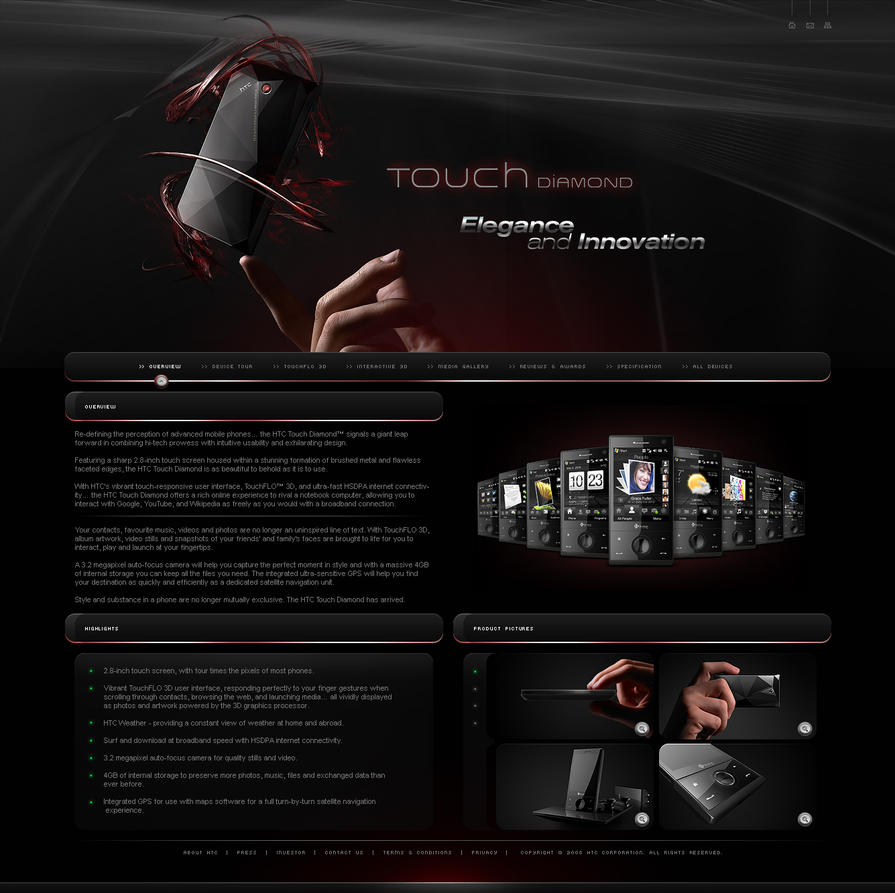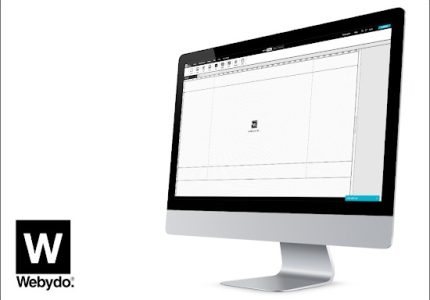Understanding Website Design
Understanding website design is essential for creating effective and engaging online experiences. It involves combining aesthetics with functionality to ensure that visitors can easily navigate and find the information they need. Good website design enhances user satisfaction, builds credibility, and supports the overall goals of a business or organization.
Design Principles and Best Practices
Understanding website design involves grasping the fundamentals of how a website looks, functions, and provides an optimal user experience. Good design combines aesthetic appeal with practical functionality, ensuring visitors find the site attractive and easy to navigate. Core principles include clarity, consistency, visual hierarchy, and usability.
Design principles such as simplicity, balance, contrast, alignment, and proximity guide the creation of effective layouts. Simplicity helps avoid clutter and makes content digestible, while balance and contrast create visual interest and focus. Alignment and proximity organize information logically, making it easier for users to scan and find what they need.
Implementing best practices in website development includes responsive design for mobile compatibility, fast load times, accessibility for all users, clear calls to action, and consistent branding. Prioritizing user-centered design ensures that websites are intuitive, engaging, and serve their intended purpose efficiently. Regular testing and updates are essential to maintain usability and adapt to changing user expectations and technological advancements.
User Experience (UX) and User Interface (UI) Design
Understanding website design involves creating visually appealing and functional online platforms that effectively communicate a message or serve a purpose. User Experience (UX) design focuses on ensuring that visitors have a seamless, enjoyable, and efficient interaction with the website, emphasizing accessibility, ease of navigation, and satisfaction. User Interface (UI) design, on the other hand, concentrates on the look and feel of the website, including layout, color schemes, typography, and interactive elements, to make the interface intuitive and engaging. Combining UX and UI design helps develop websites that are not only attractive but also user-friendly, ultimately enhancing engagement and achieving business goals.
Importance of Visual Branding
Understanding website design is essential for creating an engaging and functional online presence. It involves the careful planning of layout, user experience, and visual elements to ensure visitors can easily navigate and find the information they need. Effective website design combines aesthetics with usability, making sure that the site appeals to the target audience while maintaining performance and accessibility.
Visual branding plays a crucial role in website design by establishing a consistent and memorable identity. It includes the use of logo, color schemes, typography, and imagery that reflect the brand’s personality and values. A strong visual brand helps build trust and recognition among visitors, reinforcing the overall message and purpose of the website. When design and branding are aligned, they create a cohesive experience that supports business growth and user engagement.
Responsive and Mobile-First Design
Understanding website design is essential for creating effective and user-friendly digital experiences. A well-designed website combines aesthetics with functionality, ensuring visitors can easily navigate and find the information they need. Central to modern website design are responsive and mobile-first approaches, which prioritize adaptability across various devices and screen sizes. Responsive design uses fluid grids, flexible images, and media queries to automatically adjust the layout, providing an optimal viewing experience whether on a desktop, tablet, or smartphone. Mobile-first design takes this concept further by designing for the smallest screens first and then scaling up, ensuring the core content and features are prioritized for mobile users. This approach enhances usability, performance, and accessibility, reflecting the increasing importance of mobile devices in daily internet use. Ultimately, adopting responsive and mobile-first strategies helps achieve a seamless and engaging website experience for all users.
Website Development Fundamentals
Website development fundamentals encompass the essential skills and concepts needed to build functional and visually appealing websites. Understanding the core principles of design, coding, and user experience is crucial for creating effective online platforms. These fundamentals lay the foundation for transforming ideas into interactive digital spaces that engage and serve users efficiently.
Frontend Development: HTML, CSS, JavaScript
Website design and development encompass a variety of essential skills and technologies that together create functional and visually appealing websites. Central to frontend development are three core technologies: HTML, CSS, and JavaScript, each playing a vital role in shaping the user experience. HTML, or HyperText Markup Language, provides the structure and content of webpages, ensuring that text, images, and other media are properly organized. CSS, or Cascading Style Sheets, is responsible for the visual presentation, including layout, colors, fonts, and responsiveness, making websites attractive and user-friendly. JavaScript adds interactivity and dynamic features, enabling websites to respond to user actions, update content without reloading, and improve overall functionality. Mastering these fundamentals is crucial for creating effective, accessible, and engaging websites that meet the needs of users and clients alike.
Backend Development: Server, Database, and APIs
Backend development is a crucial component of website design and development, focusing on the server-side operations that enable dynamic and functional websites. It involves setting up and managing the server, databases, and APIs to ensure seamless data flow and processing. The server acts as the central hub that handles requests from users’ browsers, processes them, and responds with the appropriate information or actions. Databases store the essential data required for the website, such as user information, content, and transactions, allowing for efficient data retrieval and storage. APIs (Application Programming Interfaces) facilitate communication between the frontend and backend, enabling different software systems to interact smoothly. Together, these elements form the backbone of a robust web application, ensuring it functions efficiently and securely.
Content Management Systems (CMS)
Content Management Systems (CMS) are essential tools in website design and development, providing a user-friendly platform to create, manage, and modify website content without requiring extensive coding knowledge.
- CMS simplifies website maintenance by allowing non-technical users to update content easily.
- Popular CMS options include WordPress, Joomla, and Drupal, each offering various features and customization options.
- Choosing the right CMS depends on the website’s complexity, scalability needs, and specific functionality requirements.
- CMS often includes themes and plugins to enhance the visual design and functionality of the site.
- Security, SEO optimization, and regular updates are crucial aspects of managing a CMS-based website.
Incorporating a CMS into website development streamlines the process and enables easier content management, making it a fundamental element in modern web design strategies.
Hosting and Domain Management
Website design and development encompass a range of fundamental skills including creating attractive layouts, ensuring user-friendly navigation, and implementing functionality to meet user needs. An essential part of this process involves understanding the basics of website development, such as HTML, CSS, and JavaScript, which build the structure, style, and interactivity of a website.
Hosting and domain management are critical components in establishing an online presence. Web hosting involves storing website files on a server that is connected to the internet, enabling users worldwide to access the site. Choosing a reliable hosting provider ensures website security, speed, and uptime. Domain management pertains to registering and maintaining a unique web address, such as www.example.com, which users type into their browsers to visit the site. Proper management includes renewing domain registration and configuring DNS settings to point the domain to the correct hosting server. Together, effective hosting and domain strategies form the foundation for a stable and accessible website.
Planning and Strategy
Effective planning and strategy are essential components in the process of website design and development. By establishing clear objectives, understanding target audiences, and mapping out detailed workflows, businesses can create intuitive and engaging websites that meet their goals. A well-thought-out approach ensures that every element of the website aligns with the overall vision, leading to a more successful and sustainable online presence.
Requirements Gathering and Goal Setting
Effective website design and development begin with comprehensive planning and strategy, which lay the foundation for a successful project. This phase involves understanding the target audience, defining key objectives, and outlining the overarching purpose of the website. Clear requirements gathering is essential to identify the specific features, functionalities, and content needs, ensuring that all stakeholders align on expectations. Setting achievable goals helps guide the development process, establish measurable milestones, and facilitate progress tracking. Together, these steps create a structured roadmap that informs design choices, technical development, and ultimately results in a user-friendly, efficient, and impactful website.
User Personas and Customer Journey Mapping
Planning and Strategy are fundamental components of effective website design and development, providing a clear roadmap for project goals, target audience, and desired outcomes. Developing detailed User Personas helps create a deeper understanding of the diverse user groups, their needs, behaviors, and preferences, ensuring the website caters to their expectations. Customer Journey Mapping visualizes the entire user experience, identifying key touchpoints and potential pain points, which allows designers to optimize navigation, content placement, and overall usability. Together, these elements foster a user-centric approach, leading to a more engaging, accessible, and successful website that resonates with its audience.
Wireframing and Prototyping
Effective website design and development begin with thorough planning and strategy, which establish clear goals, target audiences, and desired functionalities. This foundation guides the entire project, ensuring that the design aligns with business objectives and user needs. Wireframing and prototyping are essential steps within this process, as they allow designers to visualize the website’s layout and structure early on. Wireframes serve as simplified, blueprint-like representations of pages, focusing on layout and content placement without detailed design elements. Prototypes extend this by providing interactive versions that simulate user interactions, helping identify potential usability issues and refine functionality before development begins. Together, these tools streamline the development process, improve communication among stakeholders, and lead to a user-centered website that is both functional and visually appealing.
Project Timeline and Budgeting
Effective planning and strategy are essential for successful website design and development, ensuring that the project aligns with business goals and user needs. Establishing a clear project timeline and detailed budgeting helps manage resources efficiently and keeps the project on track from inception to launch.
When developing a website, a well-structured plan includes defining objectives, target audience, and key features. This strategic approach guides the design process and informs technical decisions, leading to a cohesive user experience. Budgeting involves estimating costs for design, development, content creation, testing, and maintenance, allowing for proper resource allocation and avoiding unforeseen expenses.
- Define project goals and requirements based on client needs and target audience analysis.
- Create a detailed project timeline with milestones for design, development, testing, and deployment phases.
- Allocate budget for each phase, including workforce, tools, hosting, and ongoing maintenance.
- Monitor progress regularly and adjust plans or budgets as necessary to handle unforeseen challenges.
- Ensure all team members are aligned with the strategy and timeline to facilitate smooth collaboration.
Design Tools and Technologies
Design tools and technologies play a vital role in the process of website design and development, enabling designers and developers to create visually appealing and highly functional websites. These tools streamline workflows, enhance creativity, and ensure consistency across different platforms and devices. Staying updated with the latest technologies and tools is essential for producing modern, user-friendly websites that meet the demands of today’s digital landscape.
Graphic Design Software (Photoshop, Sketch, Figma)
Design tools and technologies play a crucial role in the website design and development process, enabling designers to create visually appealing and user-friendly interfaces. Graphic design software such as Photoshop, Sketch, and Figma are widely used for crafting layouts, prototypes, and visual assets. Photoshop offers powerful image editing and manipulation capabilities, making it ideal for creating detailed graphics and mockups. Sketch is tailored specifically for digital design, providing an intuitive interface and vector editing tools that streamline the creation of website layouts. Figma stands out as a collaborative, cloud-based design platform that allows teams to work simultaneously on projects, facilitating seamless communication and iteration. Together, these tools empower designers to translate concepts into functional, attractive websites efficiently and effectively.
Frontend Frameworks and Libraries (Bootstrap, React, Angular)
Design tools and technologies are essential components in website design and development, enabling designers and developers to create visually appealing and functional websites efficiently. Frontend frameworks and libraries such as Bootstrap, React, and Angular have revolutionized the way websites are built by providing pre-designed components, reusable code, and structured architecture.
Bootstrap is a popular open-source framework that simplifies responsive web design with its extensive set of CSS classes and components. It allows quick development of mobile-first websites that look consistent across devices, saving time in styling and layout tasks.
React is a JavaScript library developed by Facebook, known for building dynamic and interactive user interfaces. It employs a component-based architecture, making it easy to manage complex UI states, promote reusability, and improve performance through virtual DOM manipulation.
Angular, maintained by Google, is a comprehensive framework for building scalable and robust single-page applications. It offers a wide range of tools, such as built-in modules, data binding, dependency injection, and a powerful templating system, streamlining the development process and enhancing functionality.
Version Control Systems (Git)
Design tools and technologies are essential components in website design and development, enabling creators to craft visually appealing and functional websites. These tools include graphic design software like Adobe Photoshop, Illustrator, and Figma, which help in creating layouts, visual elements, and prototypes. Web development frameworks and libraries such as HTML, CSS, JavaScript, and React facilitate the building of interactive and responsive websites. Additionally, testing and debugging tools ensure that websites perform correctly across different browsers and devices.
Version Control Systems, particularly Git, play a crucial role in managing changes to project codebases. Git allows developers to track modifications, collaborate efficiently with team members, and maintain a history of all updates. Using repositories hosted on platforms like GitHub, GitLab, or Bitbucket, teams can review code through pull requests, revert to previous versions if needed, and ensure a smooth workflow. Incorporating Git into website development workflows enhances productivity, reduces errors, and promotes best practices in collaborative projects.
Testing and Debugging Tools
Website design and development rely heavily on a variety of tools and technologies to create visually appealing, functional, and user-friendly sites. Design tools such as Adobe Photoshop, Figma, and Sketch facilitate the creation of layouts, wireframes, and prototypes, enabling designers to visualize concepts effectively. These tools support collaborative workflows and help refine the user interface and experience. On the development side, technologies like HTML, CSS, JavaScript, and frameworks such as React or Angular form the backbone of building interactive and responsive websites. Version control systems like Git are essential for managing code changes and collaborating within teams.
Testing and debugging tools are critical for ensuring website quality and performance. Browser developer tools, available in Chrome, Firefox, and Edge, assist developers in inspecting code, monitoring network activity, and troubleshooting issues directly within the browser. Automated testing frameworks like Selenium, Jest, and Cypress enable the creation of test scripts to validate functionality across different browsers and devices. Additionally, performance testing tools like Google Lighthouse help assess and optimize website speed, accessibility, and SEO, ensuring a seamless user experience. Together, these tools streamline the development process, improve code quality, and enhance overall website performance.
Best Practices in Website Development
Effective website design and development are essential for creating engaging and user-friendly online experiences. Implementing best practices ensures that websites are visually appealing, easy to navigate, and optimized for performance across various devices. By focusing on clean code, intuitive layouts, and accessibility, developers can deliver websites that meet both user expectations and business goals.
SEO Optimization
Effective website design and development require adherence to best practices that enhance user experience, functionality, and search engine visibility. A clean and responsive layout ensures accessibility across devices, improving user engagement and retention. Prioritizing fast loading times through optimized images and streamlined code reduces bounce rates and boosts rankings. Incorporating SEO optimization techniques, such as relevant keywords, descriptive meta tags, and high-quality content, helps search engines understand and rank the website appropriately. Additionally, implementing a clear site structure with intuitive navigation facilitates easier indexation and improves overall usability. Regularly updating content and maintaining technical health are essential for long-term success in digital presence. Emphasizing accessibility and user-centric design philosophies ensures the website caters to all visitors while achieving business objectives effectively.
Accessibility Standards
Effective website design and development require adhering to best practices that ensure the site is user-friendly, accessible, and maintainable. Focus on creating a seamless user experience while accommodating diverse audiences and devices. Accessibility standards are fundamental to making websites usable for everyone, including individuals with disabilities.
- Prioritize a responsive design that adapts to various devices and screen sizes to enhance usability across desktops, tablets, and smartphones.
- Follow accessibility standards such as the Web Content Accessibility Guidelines to make content perceivable, operable, understandable, and robust for all users.
- Use clear, consistent navigation structures to help users find information easily and improve overall site usability.
- Implement semantic HTML elements to improve content structure, which benefits screen readers and search engine optimization.
- Optimize website performance by minimizing load times through image compression, efficient coding, and leveraging caching techniques.
- Ensure that color schemes have sufficient contrast to assist users with visual impairments in reading content without difficulty.
- Provide keyboard navigation options and focus indicators to support users who cannot use a mouse or touch interface.
- Regularly test the website with accessibility evaluation tools and gather user feedback to identify and address potential issues.
- Maintain consistency in design, layout, and terminology to create a coherent and intuitive user experience.
- Keep the website updated with the latest security practices to protect user data and prevent unauthorized access.
Performance Optimization
Effective website development requires adherence to best practices that ensure a seamless user experience and optimal performance. Prioritizing clean, organized code enhances maintainability and scalability of the website. Implementing responsive design techniques guarantees the site functions well across various devices and screen sizes. Optimizing images and leveraging browser caching significantly improve load times, contributing to better performance. Additionally, minimizing HTTP requests by consolidating files and utilizing content delivery networks helps reduce latency. Regular testing and updates ensure compatibility with evolving web standards and security protocols. Focusing on user-centered design, accessibility, and fast loading speeds creates a positive impression and encourages user engagement. Overall, integrating these best practices results in a robust, efficient, and user-friendly website that effectively meets business and user needs.
Security Measures
Best practices in website development and security are essential for creating a reliable, user-friendly, and protected online presence. Prioritize responsive design to ensure compatibility across all devices and improve user experience. Use clean, organized code, and follow consistent coding standards to facilitate maintenance and scalability. Regularly update your website’s software, plugins, and frameworks to prevent vulnerabilities. Implement strong security measures such as HTTPS encryption, secure authentication processes, and regular security audits. Protect sensitive data through encryption and secure storage practices. Additionally, incorporate measures to prevent common threats like SQL injection, cross-site scripting, and malware attacks. Monitoring website activity and setting up automated alerts can help detect and respond to security breaches promptly. Overall, integrating these practices will enhance your website’s functionality, security, and trustworthiness for users.
Deployment and Maintenance
Deployment and maintenance are essential phases in the website design and development process that ensure a website functions effectively over time. Deployment involves launching the website to a live environment, making it accessible to users, while maintenance encompasses ongoing updates, security patches, and performance enhancements. Proper management of these stages is vital for providing a seamless user experience and keeping the website secure and up-to-date.

Launching the Website
Launching a website involves careful deployment and ongoing maintenance to ensure optimal performance and security. After completing the development and testing phases, the website is transferred to a live server, making it accessible to users worldwide. It’s important to select a reliable hosting provider that offers sufficient bandwidth, security features, and technical support. Once deployed, continuous monitoring helps identify and resolve issues promptly, ensuring the website remains functional and secure. Regular updates, backups, and security patches are essential components of maintenance to prevent vulnerabilities and improve user experience over time. Effective deployment and diligent maintenance are crucial for sustaining the website’s success and meeting evolving user expectations.
Monitoring and Analytics
Effective deployment and maintenance are critical components of website design and development, ensuring that the site remains functional, secure, and up-to-date. Deployment involves launching the website onto a hosting platform, configuring servers, and ensuring all components work seamlessly together. Regular maintenance includes updating software, fixing bugs, and optimizing performance to provide a smooth user experience. Monitoring and analytics play a vital role in understanding user behavior, tracking site performance, and identifying issues proactively. Implementing robust monitoring tools and analyzing data helps developers make informed decisions for continuous improvement, ultimately enhancing overall website effectiveness and user satisfaction.
Regular Updates and Content Management
Deployment and maintenance are crucial phases in the website design and development process, ensuring that the site functions smoothly and remains secure over time. Proper deployment involves transferring the completed website from a development environment to a live server, followed by thorough testing to identify and fix any issues. Ongoing maintenance includes monitoring site performance, addressing bugs, and making necessary improvements to keep the website running efficiently.
Regular updates are essential to keep the website current, secure, and compatible with evolving technology standards. This involves updating software, plugins, and security patches to protect against vulnerabilities. Additionally, updating content such as blogs, product information, or multimedia keeps the website engaging and relevant to visitors.
Content management is a vital aspect of website upkeep, allowing easy editing, creation, and organization of website content through user-friendly CMS platforms. Effective content management ensures that the website remains fresh, informative, and aligned with the brand’s goals, enhancing user experience and supporting marketing strategies.
Troubleshooting Common Issues
Deployment and maintenance are critical phases in website design and development, ensuring the site remains functional, secure, and up-to-date. Proper deployment involves transferring the developed website from a local environment to a live server, configuring domain settings, and implementing security measures like SSL certificates. Regular maintenance includes updating software, monitoring performance, backing up data, and optimizing loading speeds to enhance user experience. Addressing issues promptly helps prevent downtime and security vulnerabilities.
Common troubleshooting challenges include broken links, loading errors, server downtime, security vulnerabilities, and browser compatibility issues. To resolve broken links, verify URL paths and update or remove outdated references. For loading errors, check server configurations, file permissions, and audit code for errors. Server downtime can often be addressed by monitoring server logs, contacting hosting providers, or restarting services. Security vulnerabilities should be managed through regular updates, implementing firewalls, and scanning for malware. Compatibility issues may require testing across different browsers and devices, then applying necessary code adjustments or using responsive design techniques to ensure consistent display and functionality.




